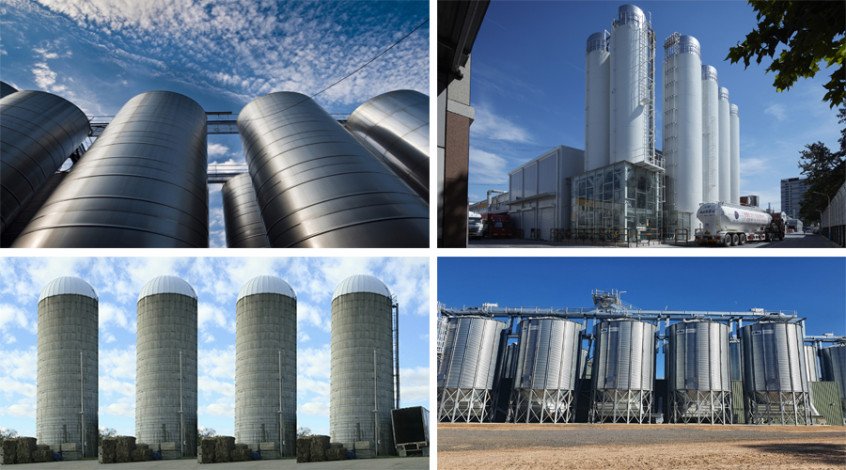
File Photo
Global food sustainability is a
growing concern. This makes food preservation an important part of agriculture.
Among the different types of grain storage systems, silo storage systems have
been widely used in the agricultural industry for the past few decades. Silos
are popular for it's
bulk storage capabilities.
A cylindrical structure made of
concrete, metal, or wood, a silo often stores bulk products such as grain,
cement, coal, etc. In the agricultural industry, it is used to store fermented
food called silage. Traditionally, silos were vertical stand-alone structures,
but horizontal silos are now more common.
Horizontal silos can be of two types
•Trench, built in a dug-out pit
lined with a concrete or wooden wall to hold products.
•Bunker, built above ground
level, usually found on feedlots and dairy farms.
Silos can also be sealed and
unsealed. Proper fumigation is possible only in sealed silos.
Silo bags are also available,
comprising heavy plastic tubes of variable lengths. These are a newer, more
flexible form of silo storage requiring lower capital investment.
That's how silos work
Using loading systems such as
vertical elevators, bucket elevator systems, or blower systems, silos are filled
with grains. A distributor is occasionally used to spread the grains more
uniformly.
In most cases, gravity plays the part in emptying grain silos. Once emptied, a machine called an auger transports the grain. However, tractors can also be used for unloading. Grain vacuums help remove grain from silos with mechanical problems.
Issues of silo storage
Although silos are simple
structures, they still require careful installation, operation, and maintenance.
Problems that can occur with
grain storage silos include:
•Temperature and Moisture control
It is important to control the
temperature and moisture of silos in order to prevent the contamination of grain,
but this can be difficult.
Warming problems occur when cool
air along a silo’s outer wall falls and warm air near the center rises,
creating convection air circulation. The temperature inside a silo can rise above
90°F. Such high temperatures can result in grain quality deterioration.
It is also possible for water to
seep through in poorly maintained silos, increasing the moisture content above
the recommended 12% for grain storage.
Poorly regulated temperature and
moisture can increase the risk of insect infestation, as well as of mold and
sprouting of grains, severely affecting grain mass and quality.
•Structural complications
Silos need to withstand the
pressure from their own weight as well as the traction pressure produced by the
commodities inside. Thus, it is important to ensure the structural integrity of
a silo for safe usage.
Incidents such as explosions,
earthquakes, collapse, corrosion, deterioration, unequal soil pressures, etc
can cause a silo to collapse. Silo failures are often sudden, and damaging to
surrounding structures. This can not only contaminate the silo’s grain and the
environment but also result in the accidental death of workers.
•Higher initial investment
Silo towers, bunkers, and
trenches demand a higher capital investment that may not always be feasible for
all farmers.
Also, most forms of silo storage
require greater care in filling and packing the grain.
•Environmental concerns
Silo bags require a lower capital
investment, but they pose a risk to the environment as they often involve the
use of pesticides.
Alternative solutions to silo storage
Rather than using a silo for
grain storage, agriculture businesses can employ hermetic bags, a more
sustainable, cheaper, and greener alternative to storing dry agricultural produce.
•Hermetic bags and pouches
prevent gas exchange and create modified atmospheric conditions. Insects and
grains naturally use up stored oxygen and expel carbon dioxide, which builds up
over time. This eliminates insect life in all stages and also prevents the fermentation of grains from occurring.
•These bags also minimize
grain-moisture contact. This reduces the risk of mold growth and associated
fungal toxins, which can be potentially fatal if consumed.
•Bags employing hermetic
technology are also far more affordable and eco-friendly when compared to grain
storage silos.
To conclude, hermetic technology
preserves the quality and quantity of the stored grains without the risks
attached to silo storage systems. This is the next step toward ensuring global
food security.
-SZK based on online information
Comment Now